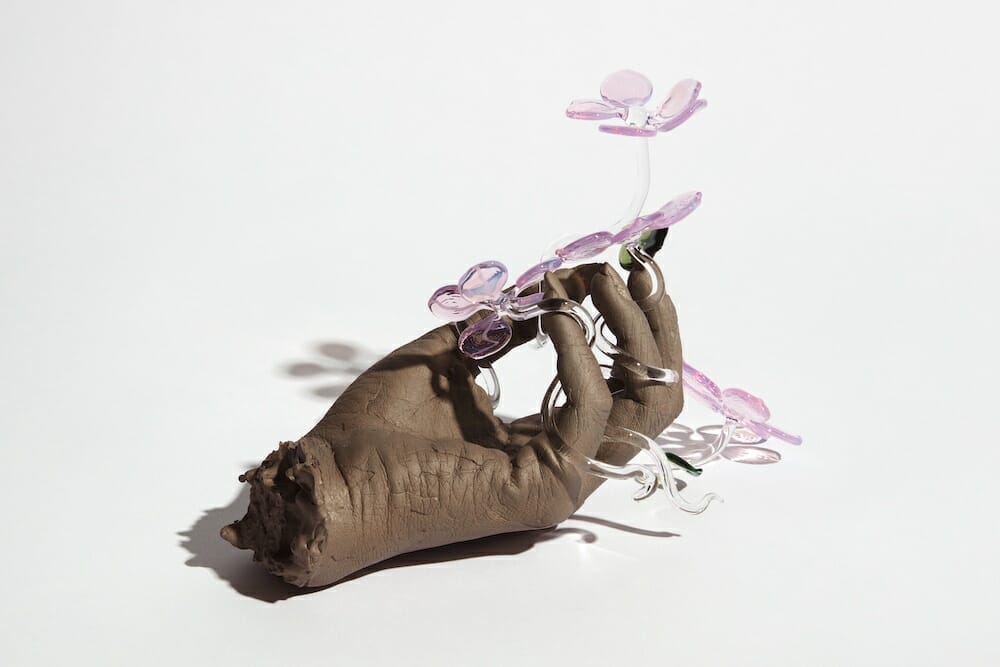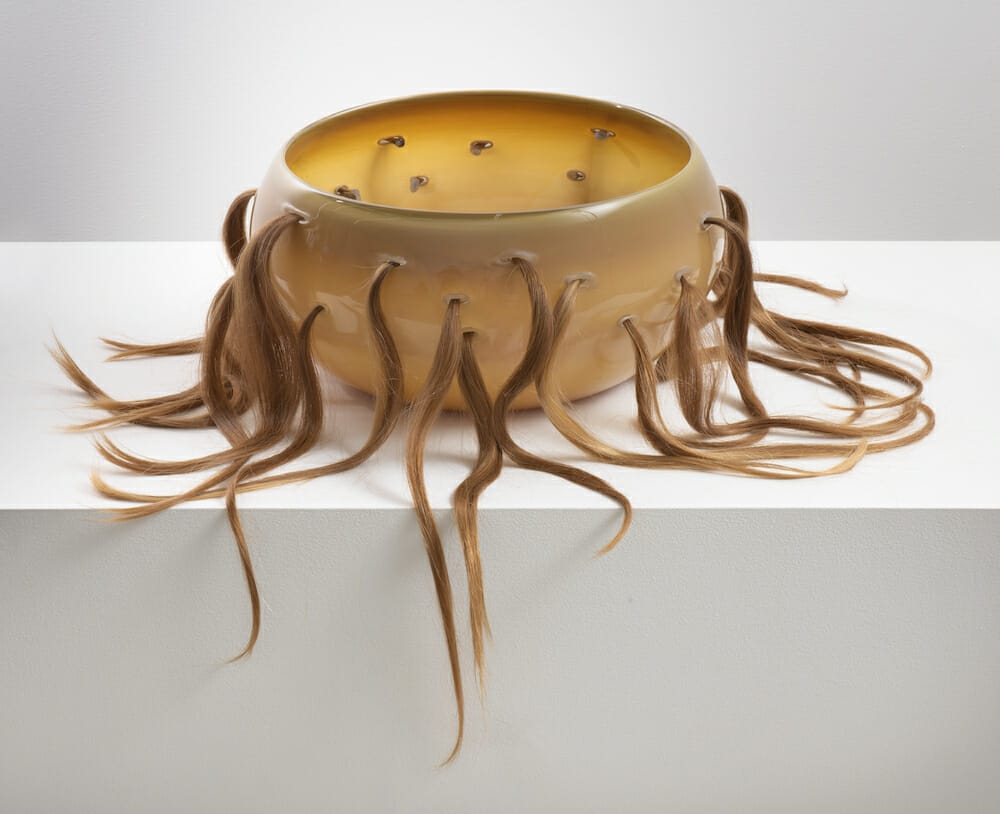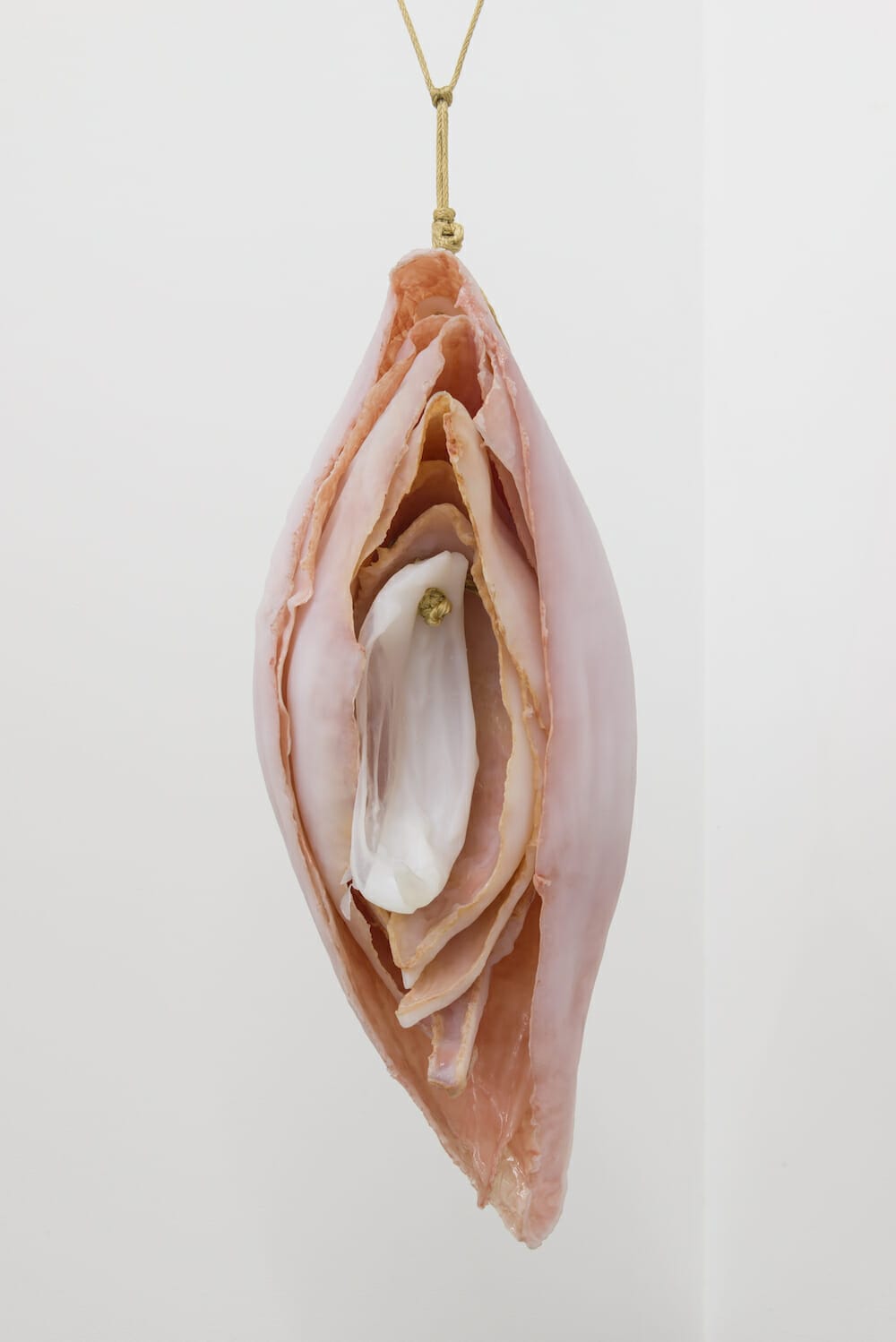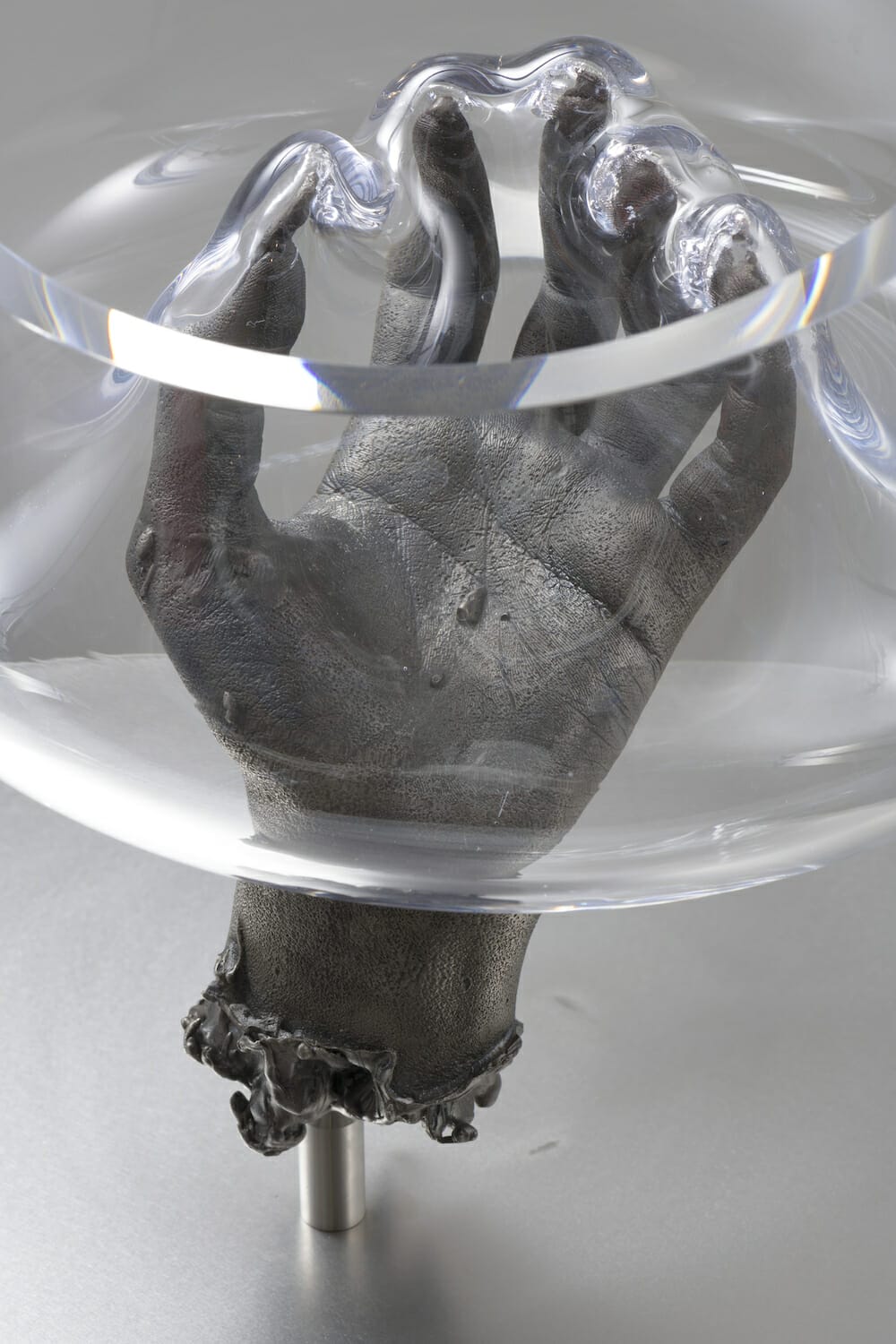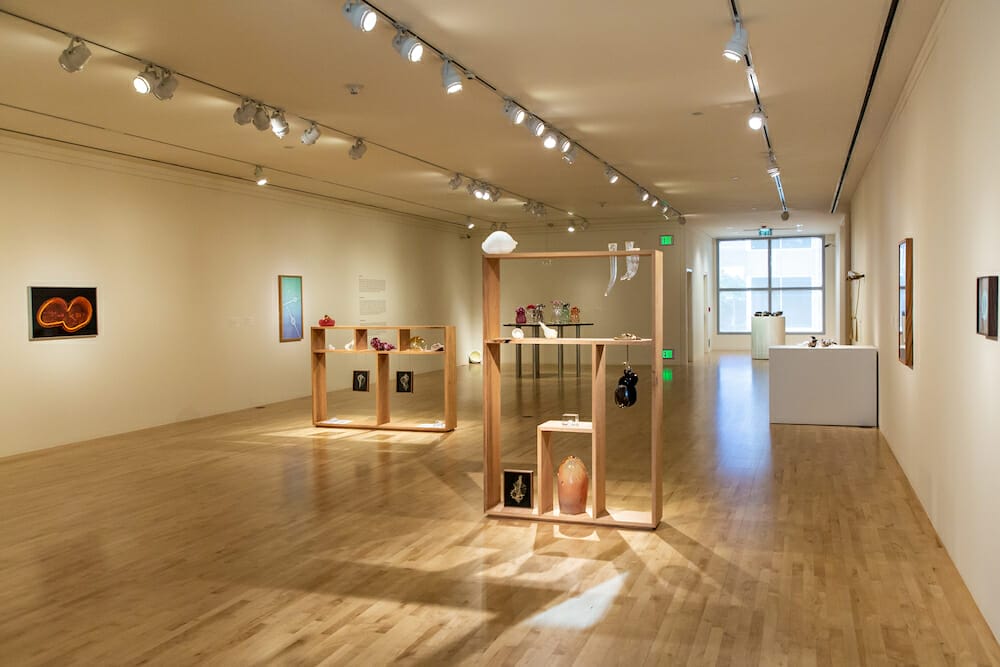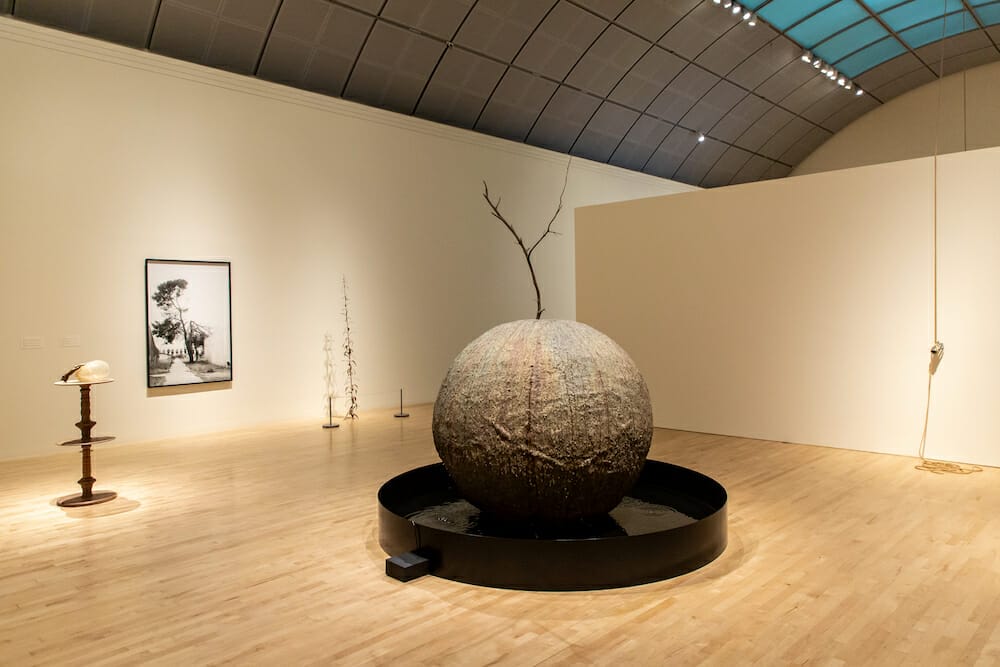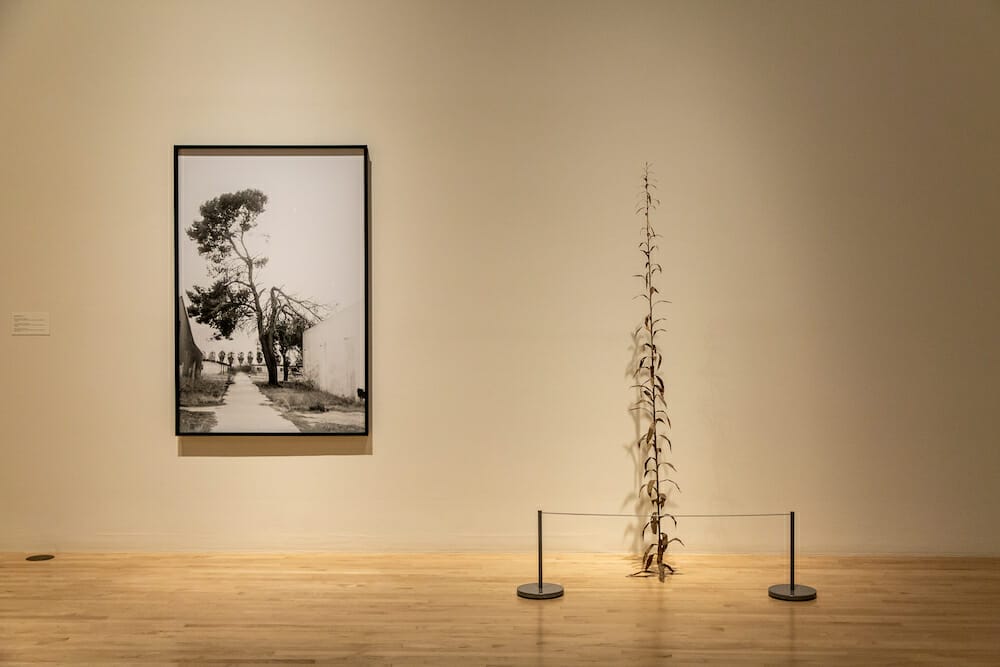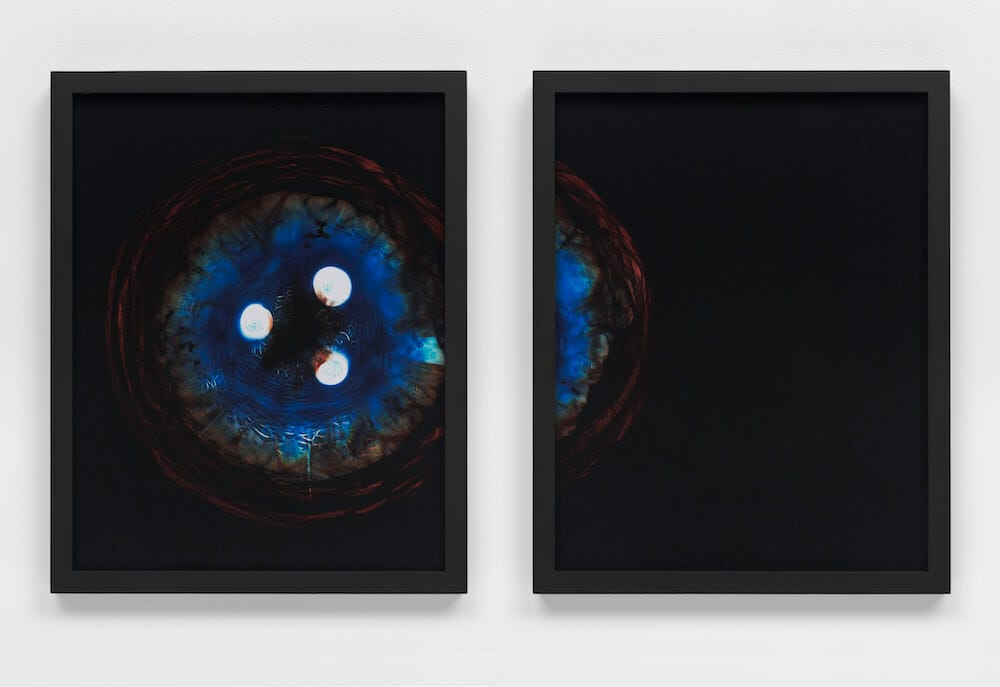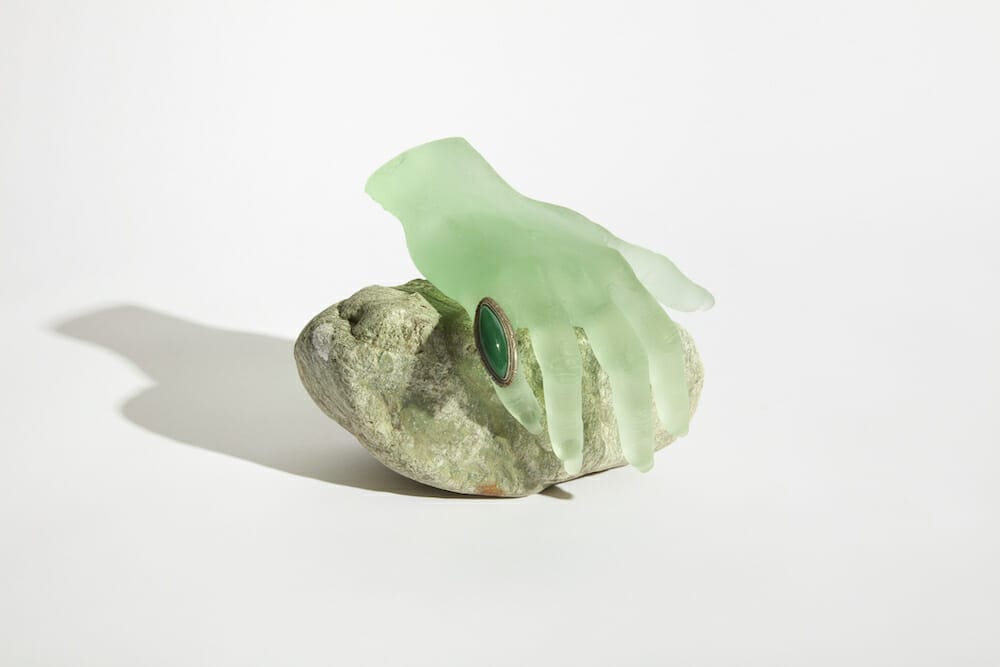Bronze casts of the artist’s hands intertwine with rope, grasp objects, and squeeze into orbs of glass that respond to their touch like viscous liquid. Delicate glass flowers curl between her bronze fingers, and silky lengths of hair stream through the holes of colorful glass-blown vessels. Replicas of plant matter, including tumbleweeds and tree branches from sites of Japanese internment, scatter and reach alongside those of her physical form.
Intimate details of Kelly Akashi’s body and personal history are on display through her works, where transient moments of time and motion are made permanent through immutable materials. We see the fine lines of her skin and varying lengths of her fingernails recorded in bronze; heirloom jewelry from her grandmother displayed on her lead crystal hands; and a visual representation of the rhythm of her heart, translated from an EKG to the undulations of a walnut wood pedestal.
She frequently borrows imagery and forms from concepts of botany, biology, and geology, copying or abstracting them into quietly colorful artworks that comment on the natural world, the passage of time, and our place within both.
In Witness, a series of black-and-white photos from 2020, we see barren trees and barracks from the Poston Relocation Center in Arizona, where Akashi’s father was interned during World War II. Their title refers to the trees’ role in her family history: botanical witnesses to her father’s experience as an internee. Other objects from the site are scattered throughout the exhibit: small stones pool in the palm of her lead crystal hand, alongside her grandmother’s jewelry; two bronze tumbleweeds at the entrance tangle together, their sharp branches simultaneously beckoning us forward and keeping us at bay.
KELLY AKASHI: FORMATIONS at San Jose Museum of Art Depicts Natural World and Passage of Time
While works like Witness feature straightforward representations of natural subjects, others require slightly more viewer interpretation. In Triple Helix, we see a collection of seven multi-colored glass vessels, each curved in the suggestion of breasts and hips. Petals grow from their necks, reaching out in soft pinks, crimson reds, and clear glass, and a single rope snakes between them, connecting and encircling their bases. Other works, such as Body Complex, feature disparate objects grouped within shelved wooden frames: medical illustrations of human organs lay flat beneath hanging X-rays of sea shells; above, a bronze hand clutches an onion as it sinks into a blown glass orb.
Though each piece is engaging enough as a standalone work of art, the most interesting aspect of the exhibit, in this writer’s opinion, is how the materials play off of each other and the space around them. Akashi’s collected works force us to contend with multiple opposing concepts: realism and abstraction; motion and stillness; intimacy and detachment; permanence and transience. How much you read into, between or around the works is up to you. But there is an intriguing sense of tension and dichotomy, in this writer’s view, that is worth investigating if you consider the exhibit as a whole. When you step out of Akashi’s bronze and glass vision and back into the sunlight, you might find that this feeling lingers with you more than any single work.
Kelly Akashi: Formations is recommended to viewers interested in biology, geology, or botany, and artwork that engages with existential concepts such as time, lineage, and physical presence. It is also recommended to those with an interest in artwork that explores the Japanese American experience, specifically internment and its intergenerational reach.
RECOMMENDED
For more information, visit the San Jose Museum of Art website.
Images courtesy of San Jose Museum of Art
Nominate this for The Picture This Post BEST OF 2022???
Click Readers' Choice!

About the Author: Lily LeaVesseur
Lily LeaVesseur has harbored a fondness for the arts since she was a few months old, when her parents took her on her first of many stroller rides through the halls of the Art Institute of Chicago. Even after moving to San Diego as a child, she returned many times so that she could stare down her favorite pieces, combing them over again and again for clues to their greatness.
She carried this enthusiasm like a missionary, and in high school petitioned to re-open the single Art History course on the roster so that she could study it with her friends. She loved feeling like she could unlock some sort of intangible mystery behind works of art, and looking for herself within the artists that created them.
Since then Lily has continued to explore art both analytically and creatively. She now writes poetry and non-fiction, sometimes accompanied by illustrations or watercolor, and hopes to one day collect these works into a graphic novel. When she's not writing or drawing, she can otherwise be found skating with friends, experimenting with new food combinations, and/or lying on the floor contemplating the transcendental nature of TikTok.

